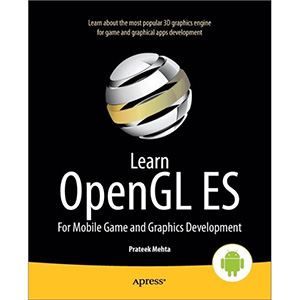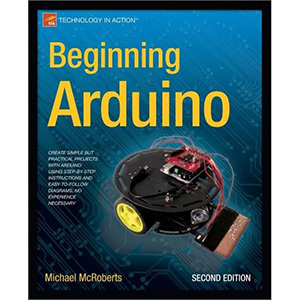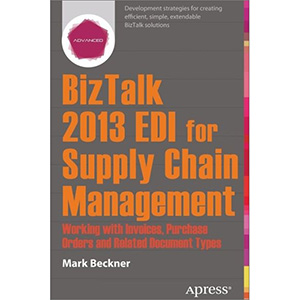| Pro Objective-C Posted: 14 Oct 2013 04:02 AM PDT 
Book Description The Objective-C programming language continues to grow in popularity and usage because of the power and ease-of-use of the language itself, along with the numerous features that continue to be added to the platform. If you have a basic knowledge of the language and want to further your expertise, Pro Objective-C is the book for you. Pro Objective-C provides an in-depth, comprehensive guide to the language, its runtime, and key API's. It explains the key concepts of Objective-C in a clear, easy to understand manner, and also provides detailed coverage of its more complex features. In addition, the book includes numerous practical examples–code excerpts and complete applications–that demonstrate how to apply in code what you're learning. The book begins with an exploration of Objective-C’s basic features and key language elements. After reviewing the basics, it proceeds with an in-depth examination of the Objective-C dynamic programming features and runtime system. Next the book covers the Foundation Framework, the base layer of APIs that can be used for any Objective-C program. Finally, new and advanced features of Objective-C are introduced and shown how they make the Objective-C language even more powerful and expressive. Each topic is covered thoroughly and is packed with the details you need to develop Objective-C code effectively. The most important features are given in-depth treatment, and each chapter contains numerous examples that demonstrate both the power and the subtlety of Objective-C. Start reading Pro Objective-C and begin developing high-quality, professional apps on the OS X and iOS platforms using the Objective-C programming language! What you'll learn - Objective-C fundamentals and key language elements
- Objective-C runtime system
- Foundation Framework APIs
- Objective-C advanced language features
- Xcode Essentials
- Debugging with LLDB
Who this book is for
This book is geared towards intermediate to advanced developers who already have some Objective-C experience and want pro-level coverage of the language, including advanced Objective-C features, recent additions to the language, and practical usage of its core frameworks and APIs. It’s also great for those developers not familiar with Objective-C that have done some C programming and also understand object-oriented programming concepts. Table of Contents
Chapter 1. Getting Started
Chapter 2. Using Classes
Chapter 3. Objects and Messaging
Chapter 4. Memory Management
Chapter 5. The Preprocessor
Chapter 6. Expert Section Using ARC
Chapter 7. Runtime System
Chapter 8. Runtime Architecture
Chapter 9. Expert Section: Using the Runtime APIs
Chapter 10. Foundation Framework General Purpose Classes
Chapter 11. Foundation Framework System Services
Chapter 12. Foundation Framework Specialized Services
Chapter 13. Foundation Functions and Data Types
Chapter 14. Expert Section: Error Handling
Chapter 15. Blocks
Chapter 16. Objective-C Literals
Chapter 17. Concurrent Programming
Chapter 18. Key-Value Programming Appendix A. Language Elements
Appendix B. Xcode Xposed!
Appendix C. Using LLDB Book Details - Paperback: 476 pages
- Publisher: Apress (September 2013)
- Language: English
- ISBN-10: 143025050X
- ISBN-13: 978-1430250500
Note: There is a file embedded within this post, please visit this post to download the file. Related Books - Learn Cocoa on the Mac, 2nd Edition (19-06-2013)
- Xcode 4 Cookbook (25-09-2013)
- RubyMotion (16-02-2013)
- Learn C on the Mac, 2nd Edition (25-03-2013)
- Programming the Mobile Web, 2nd Edition (19-04-2013)
- Programming iOS 6, 3rd Edition (11-03-2013)
- Professional iOS Database Application Programming, 2nd Edition (06-05-2013)
- Objective-C Programming For Dummies (15-10-2012)
- Objective-C for Absolute Beginners (24-08-2010)
- Learning iOS Programming, 3rd Edition (15-04-2013)
- Learning Cocoa with Objective-C, 3rd Edition (05-01-2013)
- Learn Objective-C on the Mac, 2nd Edition (21-08-2012)
- Beginning Objective-C (18-12-2012)
- Objective-C Programming (05-05-2012)
- Objective-C for Absolute Beginners, 2nd Edition (17-01-2012)
- More iOS 6 Development (25-03-2013)
- Learning Objective-C 2.0 (10-10-2010)
- Java 7 Pocket Guide, 2nd Edition (04-08-2013)
- iOS 6 Recipes (01-02-2013)
- Foundation iPhone App Development (17-12-2012)
The post Pro Objective-C appeared first on Wow! eBook. |
| Learn OpenGL ES Posted: 14 Oct 2013 03:58 AM PDT 
Book Description Want to create sophisticated games and graphics-intensive apps? Learn OpenGL ES gets you started immediately with OpenGL ES. After mastering the basics of OpenGL ES itself, you will quickly find yourself writing and building game apps, without having to learn about object oriented programming techniques. This book demonstrates the use of a powerful open-source modeling tool, Blender. You will be guided, step by step, through the development of Tank Fence, a dynamic, interactive 3D game. Along the way you’ll gain skills in building apps with Eclipse and the Android SDK or NDK, rendering graphics using hardware acceleration, and multithreading for performance and responsiveness. iOS developers will also find this book’s information invaluable when writing their apps. You’ll learn everything you need to know about: - Creating simple, efficient game UIs
- Designing the basic building blocks of an exciting, interactive 3D game
- Pulling all the elements together with Blender, a powerful open-source tool for modeling, animation, rendering, compositing, video editing, and game creation
- Taking the next big step using custom and inbuilt functions, texturing, shading, light sources, and more
- Refining your mobile game app through collision detection, player-room-obstacle classes, and storage classes
- Doing all this efficiently on mobile devices with limited resources and processing
What you'll learn - How to install and use OpenGL ES 2.0 on Android
- GLSL ES Fundamentals
- State Management
- Modeling 3D Objects Using Blender
- Using the Perl Mesh Parser
- Vertex Buffer Objects
- Using Color Masks
- sampler2D and samplerCube Uniforms
- Multi-Texturing
- Lambert Illumination Model
- Implementing the Lighting Equation
- Design, write, and build Tank Fence, an interactive 3D game
Who this book is for
Learn OpenGL ES is ideal for mobile game and interactive app developers who want to know more about the OpenGL ES engine and and use it to build more sophisticated, graphically-rich games and other apps. While the code is developed on Android, iOS developers will also find this book invaluable. Table of Contents
Chapter 1. Benefits of the New API
Chapter 2. Implementation Prerequisites
Chapter 3. ES 2.0 Fundamentals
Chapter 4. 3D Modeling
Chapter 5. Texturing and Shading
Chapter 6. Taking the Development Ahead Book Details - Paperback: 220 pages
- Publisher: Apress (August 2013)
- Language: English
- ISBN-10: 1430250534
- ISBN-13: 978-1430250531
Note: There is a file embedded within this post, please visit this post to download the file. Related Books The post Learn OpenGL ES appeared first on Wow! eBook. |
| Beginning Arduino, 2nd Edition Posted: 14 Oct 2013 03:55 AM PDT 
Book Description Want to light up a display? Control a touch screen? Program a robot? The Arduino is a microcontroller board that can help you do all of these things, plus nearly anything you can dream up. Even better, it’s inexpensive and, with the help of Beginning Arduino, Second Edition, easy to learn. In Beginning Arduino, Second Edition, you will learn all about the popular Arduino by working your way through a set of 50 cool projects. You’ll progress from a complete Arduino beginner to intermediate Arduino and electronic skills and the confidence to create your own amazing projects. You’ll also learn about the newest Arduino boards like the Uno and the Leonardo along the way. Absolutely no experience in programming or electronics required! Each project is designed to build upon the knowledge learned in earlier projects and to further your knowledge of Arduino programming and electronics. By the end of the book you will be able to create your own projects confidently and with creativity. You’ll learn about: - Controlling LEDs
- Displaying text and graphics on LCD displays
- Making a line-following robot
- Using digital pressure sensors
- Reading and writing data to SD cards
- Connecting your Arduino to the Internet
This book is for electronics enthusiasts who are new to the Arduino as well as artists and hobbyists who want to learn this very popular platform for physical computing and electronic art. What you'll learn - Controlling LEDs
- Displaying text and graphics on LCD displays
- Making a line-following robot
- Using digital pressure sensors
- Reading and writing data to SD cards
- Connecting your Arduino to the Internet
Who this book is for
Electronics enthusiasts who are new to the Arduino as well as artists and hobbyists who want to learn this very popular platform for physical computing and electronic art. Table of Contents
Chapter 1. Getting Started
Chapter 2. Light 'Em Up
Chapter 3. LED Effects
Chapter 4. Simple Sounders and Sensors
Chapter 5. Driving a DC Motor
Chapter 6. Binary Counters and Shift Register I/O
Chapter 7. LED Displays
Chapter 8. Liquid Crystal Displays
Chapter 9. Servos
Chapter 10. Steppers and Robots
Chapter 11. Pressure Sensors
Chapter 12. Touch Screens
Chapter 13. Temperature Sensors
Chapter 14. Ultrasonic Rangefinders
Chapter 15. Reading and Writing to an SD Card
Chapter 16. Making an RFID Reader
Chapter 17. Communicating over Ethernet Book Details - Paperback: 424 pages
- Publisher: Apress; 2nd Edition (September 2013)
- Language: English
- ISBN-10: 143025016X
- ISBN-13: 978-1430250166
Note: There is a file embedded within this post, please visit this post to download the file. Related Books The post Beginning Arduino, 2nd Edition appeared first on Wow! eBook. |
| Beginning 3D Game Development with Unity 4, 2nd Edition Posted: 14 Oct 2013 03:52 AM PDT 
Book Description Beginning 3D Game Development with Unity 4 is perfect for those who would like to come to grips with programming Unity. You may be an artist who has learned 3D tools such as 3ds Max, Maya, or Cinema 4D, or you may come from 2D tools such as Photoshop and Illustrator. On the other hand, you may just want to familiarize yourself with programming games and the latest ideas in game production. This book introduces key game production concepts in an artist-friendly way, and rapidly teaches the basic scripting skills you’ll need with Unity. It goes on to show how you, as an independent game artist, can create interactive games, ideal in scope for today’s casual and mobile markets, while also giving you a firm foundation in game logic and design. - The first part of the book explains the logic involved in game interaction, and soon has you creating game assets through simple examples that you can build upon and gradually expand.
- In the second part, you’ll build the foundations of a point-and-click style first-person adventure game—including reusable state management scripts, dialogue trees for character interaction, load/save functionality, a robust inventory system, and a bonus feature: a dynamically configured maze and mini-map.
- With the help of the provided 2D and 3D content, you’ll learn to evaluate and deal with challenges in bite-sized pieces as the project progresses, gaining valuable problem-solving skills in interactive design.
By the end of the book, you will be able to actively use the Unity 3D game engine, having learned the necessary workflows to utilize your own assets. You will also have an assortment of reusable scripts and art assets with which to build future games. What you'll learn - How to build interactive games that work on a variety of platforms
- Take the tour around Unity user interface fundamentals, scripting and more
- Create a test environment and gain control over functionality, cursor control, action objects, state management, object metadata, message text and more
- What is inventory logic and how to manage it
- How to handle 3D object visibility, effects and other special cases
- How to handle variety of menus and levels in your games development
- How to handle characters, scrollers, and more How to create or integrate a story/walkthrough
- How to use the new Mecanim animation
Who this book is for
Students or artists familiar with tools such as 3ds Max or Maya who want to create games for mobile platforms, computers, or consoles, but with little or no experience in scripting or the logic behind games development. Table of Contents
Chapter 1. Introduction to Game Development
Chapter 2. Unity UI Basics: Getting Started
Chapter 3. Scripting: Getting Your Feet Wet
Chapter 4. Terrain Generation: Creating a Test Environment
Chapter 5. Navigation and Functionality
Chapter 6. Cursor Control
Chapter 7. Imported Assets
Chapter 8. Action Objects
Chapter 9. Managing State
Chapter 10. Exploring Transitions
Chapter 11. Physics and Special Effects
Chapter 12. Message Text
Chapter 13. Inventory Logic
Chapter 14. Managing the Inventory
Chapter 15. Dialogue Trees
Chapter 16. Mecanim and Characters
Chapter 17. Game Environment
Chapter 18. Setting Up the Game
Chapter 19. Menus and Levels Book Details - Paperback: 808 pages
- Publisher: Apress; 2nd Edition (August 2013)
- Language: English
- ISBN-10: 1430248998
- ISBN-13: 978-1430248996
Note: There is a file embedded within this post, please visit this post to download the file. Related Books The post Beginning 3D Game Development with Unity 4, 2nd Edition appeared first on Wow! eBook. |
| BizTalk 2013 EDI for Supply Chain Management Posted: 14 Oct 2013 03:48 AM PDT 
Book Description Building a successful supply chain processing EDI implementation in BizTalk Server can be complex. Decisions must be made around how to extract and publish data, how to map to the various EDI standards, and how to appropriately batch and deliver data. If architected properly, your BizTalk solution can be highly efficient, simple, and something that can be managed and extended for years to come. The topics in this book include building complete inbound and outbound solutions for 810, 845, and 850 EDI document types, which will lay the groundwork for any document type you may be implementing. In addition, topics on how to set up FTP, SFTP, and AS2 protocols for document exchange, working with 997/999 acknowledgements, and creating custom applications for archiving and monitoring data are included. Covering mapping, architectural patterns, orchestrations, trading partner configurations, AS2, SFTP, FTP, usage of role links, and data routing, you will find that BizTalk 2013 EDI for Supply Chain Management gives you the detail and knowledge needed for success with your own implementations. What you'll learn - Successfully create professional, industry-standard and compliant implementations
- Build fully operational inbound and outbound processes using AS2, SFTP, and FTP
- Integrate with SQL Server, .NET Libraries, and other platforms and technologies
- Develop maps, schemas, orchestrations and configure encrypted file delivery
- Configure role links to allow for shipment of outbound data to multiple parties
Who this book is for
BizTalk Developers, technical architects, and executives of manufacturing or supply companies looking to implement EDI on BizTalk. Table of Contents
Chapter 1. Solution: Receiving 850 Data
Chapter 2. Solution: Sending 810 Data
Chapter 3. Solution: Sending 845 Data
Chapter 4. Mapping Data
Chapter 5. Adapters, AS2, and Acks Book Details - Paperback: 96 pages
- Publisher: Apress (September 2013)
- Language: English
- ISBN-10: 1430263431
- ISBN-13: 978-1430263432
Note: There is a file embedded within this post, please visit this post to download the file. Related Books The post BizTalk 2013 EDI for Supply Chain Management appeared first on Wow! eBook. |






Tidak ada komentar:
Posting Komentar